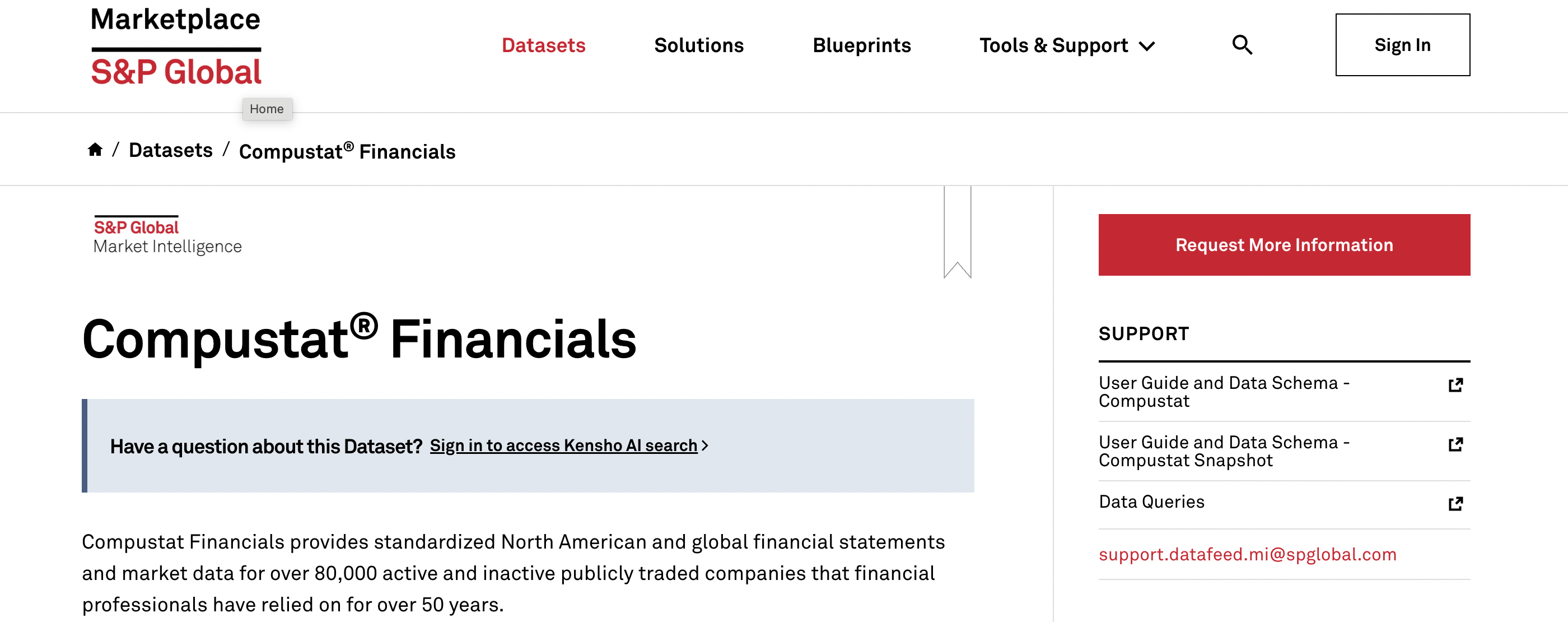Compustat

In this article, Nithisha CHALLA (ESSEC Business School, Grande Ecole Program – Master in Management (MiM), 2021-2024) delves into Compustat, its origins and history, features, applications, and its critical role in shaping modern finance.
Introduction
In an era where data drives decision-making, having access to reliable and standardized financial information is essential for academics, analysts, and professionals in finance. Compustat is a comprehensive database that offers detailed financial and economic data on publicly traded companies across the globe. Renowned for its standardized and comparable datasets, it is extensively used for financial modeling, investment research, and academic studies. It is especially valued in environments where precision, consistency, and historical depth of data are paramount.
Investing time in learning how to navigate and apply insights from Compustat is not merely an academic exercise; it’s a practical step toward becoming a data-savvy finance professional ready to tackle real-world challenges.
The History of Compustat
Compustat traces its origins to the 1960s when Standard & Poor’s developed it as a digital repository for corporate financial data. Initially focused on U.S. companies, the database expanded its scope to include international firms, establishing itself as a global standard for financial information. Over decades, Compustat evolved with technological advancements, incorporating tools for analytics and data visualization, thus maintaining its relevance in an increasingly complex financial landscape.
The acquisition of Compustat by S&P Global(Standard and Poor) further solidified its position, ensuring integration with other S&P products like Capital IQ, enhancing both usability and depth.
Key Features of Compustat
Certain key features of Compustat make it very useful as a database such as its extensive financial data, global reach, standardized metrics, customizable data access, and integration capabilities
As an example, the picture below presents the screenshot of the Compustat website.
Compustat website Interface

Source: the company.
Extensive Financial Data
Compustat, a product of S&P Global, is a robust database that provides financial, economic, and market data, making it a cornerstone for those engaged in quantitative research and corporate analysis. Compustat covers thousands of companies’ income, balance sheets, and cash flow statements. It includes detailed information on assets, liabilities, revenues, expenses, and equity.
Global Reach
Compustat provides data on companies from North America, Europe, Asia-Pacific, and emerging markets. It also features coverage of both active and inactive companies for historical analysis.
Standardized Metrics
Compustat ensures consistency and comparability across industries and geographies. It adheres to accounting standards, enabling uniform analysis.</p
Customizable Data Access
Allows users to tailor datasets according to specific time frames, industries, or financial metrics.
Integration Capabilities
Compustat is compatible with statistical software like R, Python, and MATLAB for advanced analytics. It can be integrated with S&P Global’s broader suite of tools, enhancing data utility.
Applications in Finance and Business with Compustat
There are several applications of Compustat in finance and business such as equity research and valuation, credit analysis, academic research, corporate strategy, and benchmarking
- Equity Research and Valuation: Investment professionals use Compustat to build financial models, perform company valuations, and assess market performance.
- Credit Analysis: Lenders and credit analysts utilize Compustat’s data to evaluate borrowers’ financial health and creditworthiness.
- Academic Research: Scholars rely on Compustat for empirical studies on market behavior, corporate performance, and economic trends.
- Corporate Strategy and Benchmarking: Businesses use the database for competitive analysis and to benchmark their performance against peers.
Advantages and Limitations of Compustat
Though there are multiple advantages of using this database there are also certain limitations that we have to consider:
Advantages of Compustat
- Depth of Data: Historical records spanning decades provide valuable insights for longitudinal studies.
- Reliability: Maintained by S&P Global, Compustat is a trusted source of financial information.
- Customization: The ability to filter and extract tailored datasets enhances its utility across various applications.
Challenges and Limitations
- Cost: The subscription fee is substantial, which may limit access for small organizations or individual users.
- Complexity: Navigating the platform and interpreting data may require specialized training.
- Limited Non-Financial Metrics: Focuses primarily on financial data, with less emphasis on qualitative aspects like ESG (Environmental, Social, Governance) metrics.
Why Compustat Matters in 2024
In the rapidly evolving financial landscape of 2024, Compustat remains a vital resource. With the growing complexity of global markets, the need for standardized and reliable data has never been greater. As businesses increasingly adopt AI-driven analytics, Compustat’s clean, structured datasets are a foundation for machine learning models and predictive analytics. Furthermore, its historical archives enable researchers to analyze economic trends and market cycles with unparalleled depth.
Conclusion
Compustat stands as a benchmark in financial databases. Its extensive features, historical depth, and global reach make it indispensable for professionals and academics. Compustat empowers users to make informed decisions in a data-driven economy by bridging the gap between raw data and actionable insights.
Why should I be interested in this post?
For finance students, understanding and utilizing Compustat can be a game-changer. Mastery of this database enhances research capabilities and provides a competitive edge in the job market. Familiarity with Compustat signals to employers a proficiency in handling large-scale financial data and performing advanced analytics skills highly sought after in finance, investment banking, and consulting.
Related posts on the SimTrade blog
▶ Nithisha CHALLA Datastream
▶ Nithisha CHALLA S&P Global Market Intelligence
▶ Nithisha CHALLA Factiva
▶ Nithisha CHALLA Statista
▶ Nithisha CHALLA CRSP
Useful resources
S&P Global Compustat Financials
Fidelity Investments Introduction to Standard & Poor’s Compustat
European University Institute (EUI) Compustat – Standard and Poor’s
Wikipedia Compustat
About the author
The article was written in December 2024 by Nithisha CHALLA (ESSEC Business School, Grande Ecole Program – Master in Management (MiM), 2021-2024).
